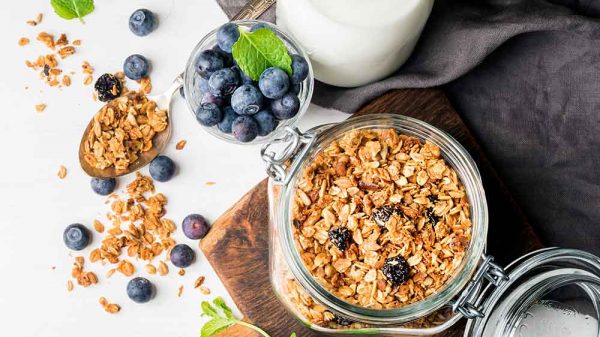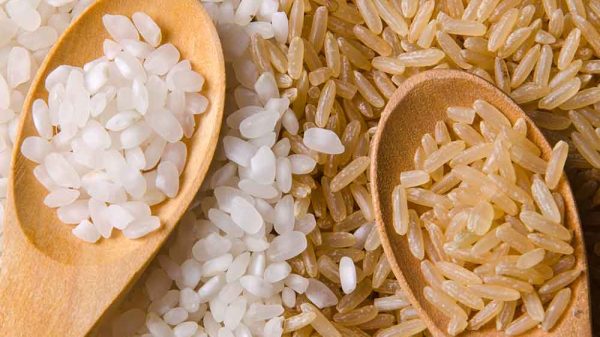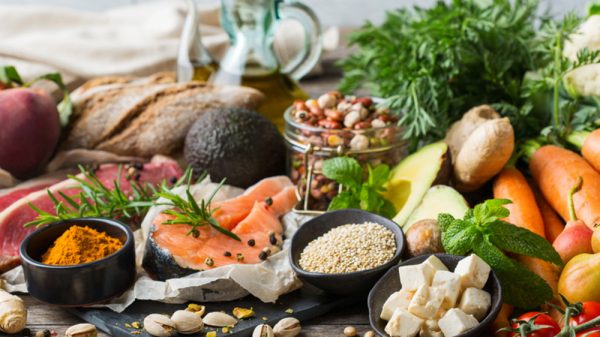If you’re struggling to lose weight in your 50’s, you’re not alone. At this stage in life, women go through hormonal changes that make it even more difficult to lose excess weight. Why is it so hard to lose weight in your 50’s, and is there anything you can do to make it easier? Read on to find out strategies for weight loss for women over 50.
Metabolism Is Tied to Hormones
Why do I gain weight so easily and why is losing weight so hard during middle age?
As we get older, our metabolism begins to slow down naturally. Our cells essentially get worn out and don’t function quite as smoothly as they did during our younger years. As a result, the metabolic processes in our body are less efficient when converting macronutrients into useable energy. This leaves us more vulnerable to weight gain as well as metabolic conditions that could accompany it, such as high cholesterol, high blood pressure, insulin resistance, and fatty liver disease.
On top of the natural aging process, women are faced with a massive hormonal change during menopause. Menopause is characterized by a sharp decline in estrogen, the female hormone that regulates the menstrual cycle, and the development of female sex organs. Interestingly, estrogen also plays a critical role in regulating metabolism and fat distribution patterns. In younger years, the abundance of estrogen influences the distribution of fat around the thighs and hips, regulates lipid processing in the liver, and helps maintain insulin sensitivity. (1)
When estrogen levels decline during menopause, fat distribution tends to shift to the belly area. Fat collected around the abdomen contributes to stress hormone secretion, influences the hunger hormone ghrelin to increase appetite, and increases systemic inflammation. Metabolic processes in the liver slow down and insulin sensitivity is no longer protected. All of these factors, combined with the natural aging process, make you increasingly susceptible to weight gain, insulin resistance, high blood sugar, heart disease, and fatty liver disease.
If you find yourself going through menopause and steadily gaining weight, don’t despair! Diet and lifestyle can greatly influence your weight and fight against hormonal changes.
Using Food to Combat Weight Gain During Menopause
Healthy eating is key to maintaining a healthy weight during and after menopause.
Even if a certain diet plan kept you slim in your 40’s, that same diet plan won’t necessarily work in your 50’s. Hormonal changes and metabolic shifts make your body less tolerant of junk foods and more vulnerable to spiking blood sugar levels. It’s time to rework your eating habits!
1. Eat Fewer Calories
As your metabolism changes, cutting back on the calories you consume will help you make sure that your energy intake and energy expenditure are in equilibrium. If you’re aiming to lose weight, maintaining a calorie deficit will be necessary for losing excess weight. At the same time, eating too few calories may result in muscle wasting, fatigue, and other unpleasant symptoms.
When aiming to cut calories, first take a look at your sauces and condiments. Do you use a lot of oil-based or cream-based sauces? These fatty products harbor a high concentration of calories can quickly turn a 300-calorie meal into a 500-calorie meal. If you use those kinds of sauces, try measuring out the portion size, using as little as possible for the flavor you like. Alternatively, try to swap these out for lower-calorie options like seasonings, oil-free vinaigrettes, and hot sauces.
2. Eat Mainly Whole Foods
The best diet for women over 50 is one that is comprised mainly of whole foods that supply a balance of complex carbohydrates, healthy fats, and protein.
Complex carbohydrates come from whole grains like brown rice and quinoa, as well as from fruits and veggies. When obtained from these whole foods, carbs are broken down slowly in the digestive system, preventing a spike in blood sugar and providing sustained energy over time. Fruits and veggies also contain lots of antioxidants to fight against age-related oxidative stress as well as dietary fiber that supports the growth of healthy bacteria.
Healthy fats provide structural support for all of the cells in your body while helping lower systemic inflammation. You can find healthy polyunsaturated and monounsaturated fats in products like flaxseeds, chia seeds, walnuts, pecans, avocado, salmon, and mackerel.
Getting enough protein is crucial for supporting healthy metabolism, muscle growth, liver health, hormonal health, and immune function. Choose lean proteins like nuts, seeds, beans, nonfat yogurt, low-fat mozzarella cheese, and chicken breast.
3. Optimal Ratios of Essential Amino Acids
Beyond simply getting enough grams of protein, getting optimal ratios of essential amino acids allows your body to manufacture all of the proteins, hormones, neurotransmitters, and muscle tissue that it needs. Getting inadequate amounts of just one of the essential amino acids can slow down your ability to build muscle. An essential amino acid supplement can play an important role in supporting muscle synthesis and liver health.
4. Stay Away from Processed Foods, Added Sugar, and Fatty Meat and Dairy
Processed foods include anything that’s been subjected to human industrial process and packaged. Processed foods tend to contain high levels of added sugar, saturated fat, sodium, and harmful preservatives, all of which contribute to the development of type 2 diabetes, fatty liver disease, and cardiovascular disease.
Processed Food and Added Sugar
In older adulthood and in the wake of hormonal shifts, the body is much more sensitive to added sugars and refined grains. When you consume added sugars or refined grains, the body digests them rapidly and send glucose into the bloodstream, causing those dreaded blood sugar spikes. The pancreas triggers the release of insulin, a hormone that signals your cells to collect glucose to use as cellular fuel for your body’s metabolism. Eating too much added sugar overwhelms the body, which contributes to insulin resistance. To avoid processed sugar and refined grains, steer clear of foods like soda, juice, candy, breakfast cereals, white bread, white rice, pop tarts, snack bars, chips, crackers, cake, ice cream, doughnuts, and cookies.
Saturated Fats
High-fat meat and dairy products are high in saturated fat. Consuming high levels of saturated fat interferes with the normal functioning of insulin and insulin receptors, contributing to metabolic syndrome. Saturated fat also raises cholesterol and triglycerides in the blood, which over time can build up to form plaques in the blood vessels through a process called atherosclerosis. Plaques raise the risk of developing heart disease and having a stroke or heart attack. Avoid food like whole milk, cheese, red meat, sausages, and salami. Food served in restaurants often contains high levels of saturated fat.
Sodium and artificial nitrates and nitrites contribute to inflammation in the body, which leads to weight gain and a slow metabolism. Sodium is also a major factor contributing to high blood pressure. Steer clear of packaged meats, chips, fried foods, and restaurant foods.
5. Reduce Your Stress Levels
In your 50’s, stress levels may increase in part due to physical and hormonal changes. Stress plays a major role in increasing blood sugar, contributing to liver inflammation, and causing weight gain. Overall, the physiological response to stress causes you to not feel very good.
Stress management techniques will help you navigate physical changes in your 50’s while helping decrease the body’s cortisol levels and balance out metabolic processes.
- Yoga: Yoga is popular as a relaxation technique for good reason – it works! Striking yoga poses at home or attending a yoga class allows you to carve time out of your busy schedule to focus on relaxation. Yoga works by bringing you into the present moment and focusing your thoughts on body movements, rather than on external worries and pressures.
- Sleep: Getting enough sleep helps get rid of stress. When you’re running low on sleep, the body is sensitized to a stressor trigger. Stress hormones increase and worsen metabolic dysfunction and weight gain. By regularly getting enough hours of sleep, you strengthen your body’s ability to cope with stress and decrease systemic inflammation.
- Deep breathing: This is a good technique because you can use it in stressful conditions everywhere. You can practice deep breathing in a meeting, in a grocery store, on a plane, or while walking down the street. Like yoga, deep breathing refocuses the mind on the present moment. Taking deep breathes can rein in worrying thoughts, slow down the heart rate, and calm the stress response.
6. Limit Your Alcohol Intake
Alcohol can wreak havoc on your metabolic health, especially in later adulthood. In particular, alcohol causes inflammation in the liver, a central organ in the metabolism of sugars, fats, and protein. Supporting liver health is vital to supporting overall metabolic health. However, when you drink alcohol, the liver is exposed to ethanol and must break it down into nontoxic byproducts to be removed from the body. Regular exposure to alcohol can cause inflammation, oxidative stress, and cause the body to hold onto excess fat.
If you enjoy drinking, stick to a glass of red wine on occasion. In moderation, red wine has a few health benefits due to its high content of polyphenols.
7. Try Intermittent Fasting
Research shows that intermittent fasting may have therapeutic effects for handling the metabolic challenges that accompany menopause. (2) Intermittent fasting helps establish healthier cholesterol levels and support cardiovascular health. (2)
So, what exactly is intermittent fasting? Fasting means you go for a certain number of hours without eating. This length of time varies depending on what works best for you. A 12-hour overnight fast would mean that you may have your last meal at 6 pm, and you won’t have breakfast until 6 am. Some people extend this time to a 16-hour or 18-hour fast, or longer. Fasting essentially allows your digestive system and metabolism to take a rest from breaking down food, therefore allowing nutrients and resources to be channeled towards repairing cells and improving organ function. Intermittent fasting shows promise for increasing the fat loss without muscle loss, normalizing blood glucose levels, and supporting a healthy metabolism.
If you’re prone to hypoglycemia or have diabetes, check in with your doctor and registered dietitian to make sure you can safely do intermittent fasting.
8. Drink Coffee and Green Tea
We mean regular green tea brewed from leaves…not those green tea diet pills. Both coffee and green tea contain caffeine that can help you feel more awake and energized while reducing your appetite.
Coffee has been shown to have therapeutic effects on liver health and effectively lowers elevated liver enzymes that are associated with liver inflammation. Soothing liver inflammation is crucial for supporting healthy, smoothly-running metabolism.
Green tea has long been revered as a medicinal plant. Green tea leaves are rich in the polyphenol epigallocatechin 3-gallate, better known as EGCG. This polyphenol has potent antioxidant effects that help damaged cells repair. It also allows the mitochondria – the energy sources of the cell – to function more effectively and convert food into energy.
The Key to Being Fit Women Over 50: Strength Training
Lifting weights is not only for men! A weight loss program for women over 50 – and women of all ages – should include strength training. Strength training plays a massive role in building lean muscle, which is vital to your overall health. Strength training on a regular basis combats the loss of muscle mass that naturally occurs with age. Having a solid amount of lean muscle will also burn fat, rev your resting metabolic rate, prevent weight gain, and facilitate weight loss.
Having lean muscle mass will also have health-protecting effects in later adulthood. Muscle mass plays an important role in helping older adults avoid injury, heal more quickly, stay active, maintain their independence, and increase longevity and quality of life.
If you’ve never done strength training, don’t worry! It’s not all about lifting heavy weights like bodybuilders. There is variation in the types of strength training you can participate in, and if you’re new to it, you can start with bodyweight exercises like push-ups, pull-ups, and lunges. As you get stronger, add in dumbbells and free weights to challenge your muscles more. Make sure your strength-training regimen works up to including weighted activities that challenge all muscle groups.
Sample Women’s Muscle-Building Routine
If you’re looking for a full-body strength training workout that tests multiple muscle groups, this workout is for you.
Warm-Ups
Always start out with warm-ups to get your blood flowing, your heart pumping, and your muscles warm before getting into more hardcore exercises. For example, go for a light jog, do a few burpees, and strike a few yoga poses. Additionally, incorporate a few stretches into your warm-up to help protect from injury.
Resistance Bands
Resistance bands challenge your muscles without using weights. Much like weights, the bands have varying levels of resistance. The tighter the bands, the more challenging they will be for your muscles. Stretchy bands with more give are easier on your muscles, simulating lighter weights.
Secure a band around your ankles. Assume a squat position, keep your back straight, and clasp your hands in front of you, and sidestep across the room and back. Then take large steps forward, still in a squat position, in a zig-zag motion. You can also try taking backward steps, and for an extra challenge, add another resistance band above your knees.
Lunge Metrics
Using one leg, take lunges forward, backward, and to the side. Switch legs and repeat. For an extra challenge, add in sliding discs to test your balance and further challenge your leg muscles.
Kettlebell Swing
This exercise burns your core muscles and arms in one swift motion. Take a kettlebell and swing between your legs while hinging at the hips and maintaining a straight back. Swing outwards while straightening your body.
Dumbbell Push-Ups
Assume a push-up position with a dumbbell in each hand. Choose a weight that is challenging but not impossible to lift, such as a 15-pound weight. Complete one push-up, and while your arms are outstretched, pull each dumbbell up with alternating arms. After doing five repetitions on each side, complete another push-up. Repeat the exercise.
Cool-Down
To cool down, do five burpees followed by a brisk walk.
What About Cardio?
Cardio or aerobic exercise focuses on strengthening the vascular system and the heart. Though cardio won’t really help you build muscle like a strength-training will, it is a great way to lower your blood pressure, burn more calories, and expedite your weight loss.
Metabolic training, a form of high-intensity exercise, is also very effective for jump-starting your metabolism. High-intensity exercise is designed to keep your metabolism burning calories for many hours after your workout has ended and may be an effective way to fight a hormone-induced sluggish metabolism.
When it comes to physical activity, any kind has benefits for your health and is always better than living a sedentary lifestyle.
Conclusion
There’s no doubt that going through menopause is tough. With the accompanying dips in estrogen, the body’s metabolism changes and makes you more prone to weight gain, insulin resistance, and high blood sugar. However, you can combat these effects by reducing your caloric intake,
References:
(1) https://www.ncbi.nlm.nih.gov/pmc/articles/PMC3660717/
(2) https://www.ncbi.nlm.nih.gov/pmc/articles/PMC4960941/
























